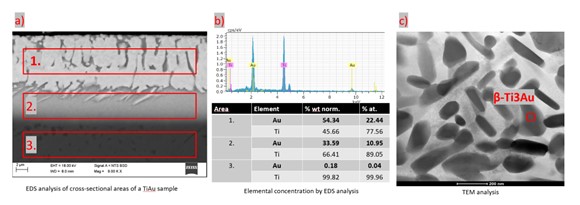
Publikacje
Pracownicy Laboratorium Naukowo-Dydaktyczne Nanotechnologii i Technologii Materiałowych na Politechnice Śląskiej angażują się w projekty i prace naukowo-badawcze związane z różnymi rodzajami materiałów. Obejmują one metale, polimery, ceramikę oraz kompozyty. Zakres zastosowań tych materiałów jest szeroki – od przemysłu motoryzacyjnego po biomateriały wykorzystywane w medycynie.
Nasze badania koncentrują się na następujących zagadnieniach:
Wytwarzanie materiałów strukturalnych i kompozytowych metodą druku 3D - opracowywanie technologii wytwarzania wieloskładnikowych filamentów do druku 3D jak również wytwarzanie nowoczesnych materiałów kompozytowych
Własności konstrukcji z materiałów metalowych wytwarzanych technologią SLM (Selective Laser Melting): Technologia SLM pozwala na precyzyjne wytwarzanie elementów z tytanu i jego stopów. Nasze badania skupiają się na analizie ich właściwości mechanicznych, termicznych i strukturalnych.
Metalurgia proszków oraz technologie infiltracji materiałów porowatych - tworzenie innowacyjnych kompozytów ceramiczno - metalowych
- Własności plastyczne - badania cieplne materiałów metalowych
- Nanomateriały - wytwarzanie nanopowłok oraz nonowłókien
- Tomografia komputerowa materiałów konstrukcyjnych, kompozytowych, metali lekkich
Warto podkreślić, że nasze badania mają istotny wpływ na rozwój technologii i przemysłu, a ich wyniki przyczyniają się do rozwoju nowych materiałów i zastosowań.
Titanium-based alloy surfaces microalloyed by gold for biomedical application
Oktawian Bialas1* (O. Bialas), Anna Taratuta2* (A. Taratuta)
1 Silesian University of Technology, Faculty of Mechanical Engineering, Konarskiego 18A st., 44-100 Gliwice, Poland
2 Silesian University of Technology, Faculty of Biomedical Engineering, Roosevelta 40 st., 41-800 Zabrze, Poland
*oktawian.bialas@polsl.pl
The study of the interaction between surfaces is a crucial aspect of engineering, but it is especially important in the context of biomedical applications of metallic materials in medicine. The materials used for medical implants must meet strict physical and chemical requirements, but most importantly, they must ensure the safety of the patient by being as immunologically inactive as possible. This research aimed to investigate the impact of laser microalloying a titanium base material coated with gold to achieve the specific phase – Ti3Au [1], which is said to possess mechanical and physico-chemical properties desirable in the field of biomedical engineering such as high hardness, good wear properties and high biocompatibility. In this study, CP Ti Grade II and Ti13Zr13Nb alloy were laser treated to form in the surface area the intermetallics that improve their mechanical properties, corrosion resistance, and wear resistance. The research specifically focused on the microstructural and phase formation during the laser treatment of CP TI grade II and Ti13Zr13Nb that were enriched with gold, and how such treatment influences the nano-harness of the material. Additionally, the research is aimed at understanding on how the surface properties are affected by the laser microalloying process [2] and how they can be controlled to produce the desired outcomes.

Figure 1. Crossectional analysis a) scanning electrone microscopy b) Energy-dispersive X-ray spectroscopy c) Transmission electron microscopy from area 1.
Optical, scanning and transmission electron microscopy were used to describe the phenomena that occurred. The resulting change in hardness was measured using the nano-indentation. The tests carried out allowed a positive evaluation of the obtained multilayer surfaces obtained. Several regions (Fig. 1) with different atomic concentrations of gold and titanium were found [3], of which the surface layer contained a Ti3Au phase. The gold-enriched and laser-alloyed specimens were characterised by increased hardness, allowing for further research towards optimisation of the process.
This work was supported by the National Science Centre, Poland (UMO-2022/45/N/ST8/01004)
References
[1] E. Svanidze, T. Besara, M.F. Ozaydin, C.S. Tiwary, J.K. Wang, S. Radhakrishnan, S. Mani, Y. Xin, K. Han, H. Liang, T. Siegrist, P.M. Ajayan, E. Morosan, Science Advances, 2016, 2.
[2] M. Giannelli, D. Bani, A. Tani, F. Materassi, F. Chellini, C. Sassoli, Journal of Periodontology, 2017, 88, 1211–1220.
[3] W.E. Martinez, G. Gregori, T. Mates, Thin Solid Films, 2010, 518, 2585–2591.









